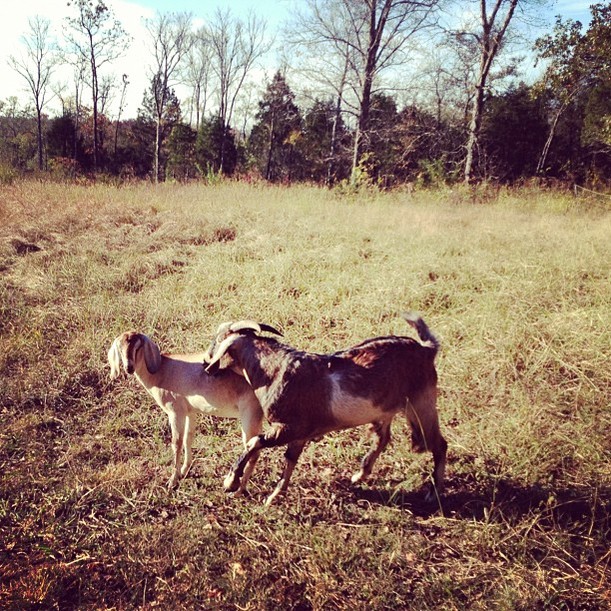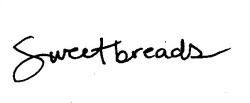
 Gozer, putting the moves on Tijeras
Gozer, putting the moves on Tijeras
A few months ago, Scrapple and I had a little kitchen table meeting to strategize our first breeding season. We decided that we would aim to kid at the beginning of April. By that time the grass is growing and the sun is warm but the insects aren't yet out in full force. Goats have a 5 month gestation period so this meant we would breed at the end of October/beginning of November.
While it was pretty easy to write "Breed Goats" into a calendar reminder, it didn't take long for the reality of how clueless we were about the actual logistics to set in.
We knew that we wanted to choose who bred with who, and who was not going to be bred. This ruled out just "running" the bucks with the does for a month (which is a great way to do things if your herd is set up for it). We would need to wait for the signs of heat or estrus in the doe. Then we would need to put the doe with one of the bucks in an area away from the herd. We would need to make sure that he actually did the deed, several times, and then wait to see if the doe came into heat again later in the season. If not, the breeding will have been successful.
With no experience breeding any animals (not even pet hamsters!) we were a little boggled. We hit the books, expecting some clarity only to emerge thoroughly perplexed. Experienced goat owners talk of identifying a goat in heat by her waving tail and "winking" vagina. What!?! Our goats wave their tails all the time! How would we know when they were in heat? What if we missed it?
Some sources say that only Alpines are seasonal breeders (meaning they only come into heat one season a year - here in the Northern Hemisphere, this happens during the Fall), but, after these past few weeks, I think it's pretty safe to say that our entire herd is seasonal. Never, ever, have our goats been so entertaining as in the month of October. Tail wagging galore, weird unheard of noises, "buckish behavior"... Once the mercury dropped it was like we were running a sleepover camp. Hormones were clearly in overdrive and it seemed like they were all in heat, but it was too early to breed so we waited.
We had a plan. We had read about something called "The Buck Effect". Supposedly, if you put your does near your bucks for a few days during breeding season, they'll all come into heat about a week later. You breed your whole herd the same week and, if all goes well, you're only waking up every 2 hours to check for newborns for a few weeks instead of a few months. Sounds great, right?
This Monday my "Start Buck Effect" calendar reminder popped up. We brought Izzy and the does over to a new paddock right next to the buck pen - much strutting and pretend ignoring of the bucks ensued. We wondered what, if anything, would happen.
By the next morning, the Buck Effect was already working! One of our yearling Nubians, Tijeras, was at the fenceline closest the bucks - waving her tail and calling to Gozer (who was busy peeing on his own beard when he wasn't ramming into the fence and calling back to her)! She also seemed to have a clear discharge (I didn't think to look for winking), which is supposed to be a sign as well. It was time! While the rest of the herd was with me in the milking barn, we put Gozer in the paddock with Tijeras. One down, 7 to go.
The heat is on!


